Interview with Mr. Ken Sell, Head of School about Aoba Komagome Campus
Due to continuous student growth over the past five years, Aoba-Japan International School (“Aoba”) has outgrown its Hikarigaoka campus. Aoba wishes all students to continue their studies and has decided to relocate the upper secondary school (grades 10-12) to the Bunkyo Gakuin University Girls’ Junior and Senior High School building.
The edu JUMP! talked to Mr. Ken Sell, Aoba’s Group Head of School, about the newly opened Aoba Senior School Campus at Kogagome.

What is important to us in designing the campus
The Senior School campus rents four floors of the Bunkyo Gakuin University Girls’ Junior and Senior High School to accommodate approximately 140 students in the upper third grade (grades 10-12).
In developing the concept for the campus, we researched leading examples from around the world, including Australian universities, Oxford University Business School, and international schools in Singapore.
Ultimately, we decided that our design concept for the campus would be to create a space that reflects the transition from upper secondary school to university and business. Therefore, instead of standard box-in classrooms, we tried to combine multipurpose rooms, meeting rooms, spacious areas for students to work with each other, and lounges.
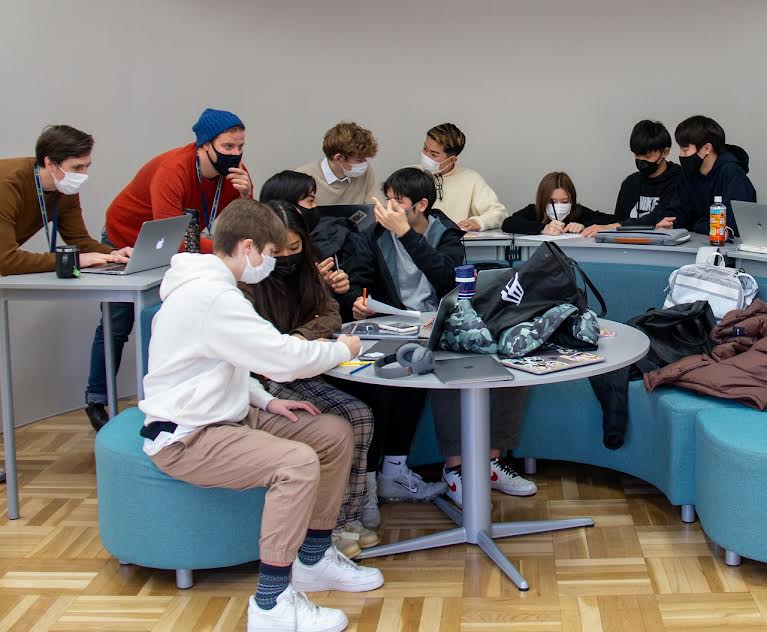
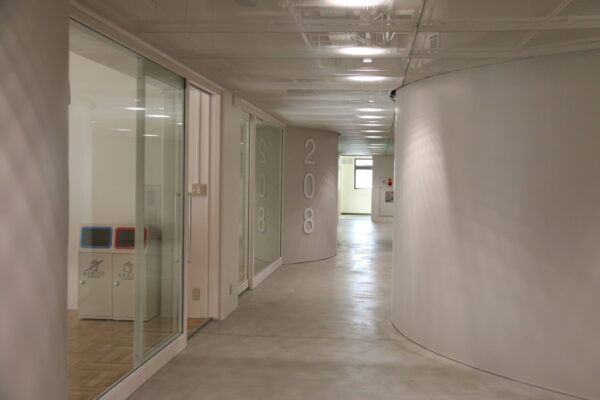
In other words, we created a learning space that mirrors the students’ future, not where they came from but where they are going. We combined open and closed spaces where students work in teams to design innovative solutions to global problems collaboratively. The spaces are designed so all students can use digital technology effectively. The campus combines the feel of a modern corporate office with spaces that support learning in the applied sciences and engineering, the arts and entrepreneurship and business.
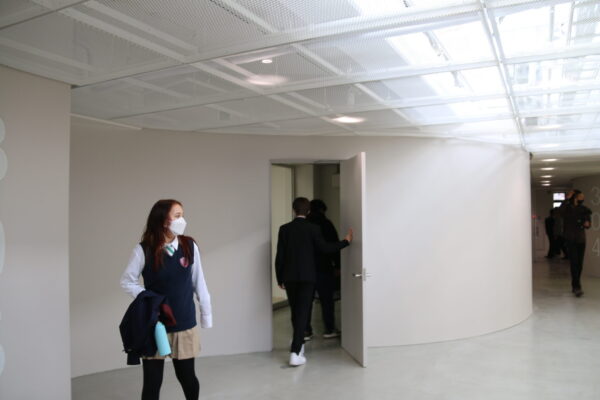
There is a seminar room adjoining the cafeteria. A digital screen is set up in the center of the space so no matter where people are seated they can clearly see what is presented in front of them.
In this new campus, the combination of large and small spaces separated by glass walls support differentiated learning to happen. We designed the building so that the students and teachers can see where everyone is and what they are doing.
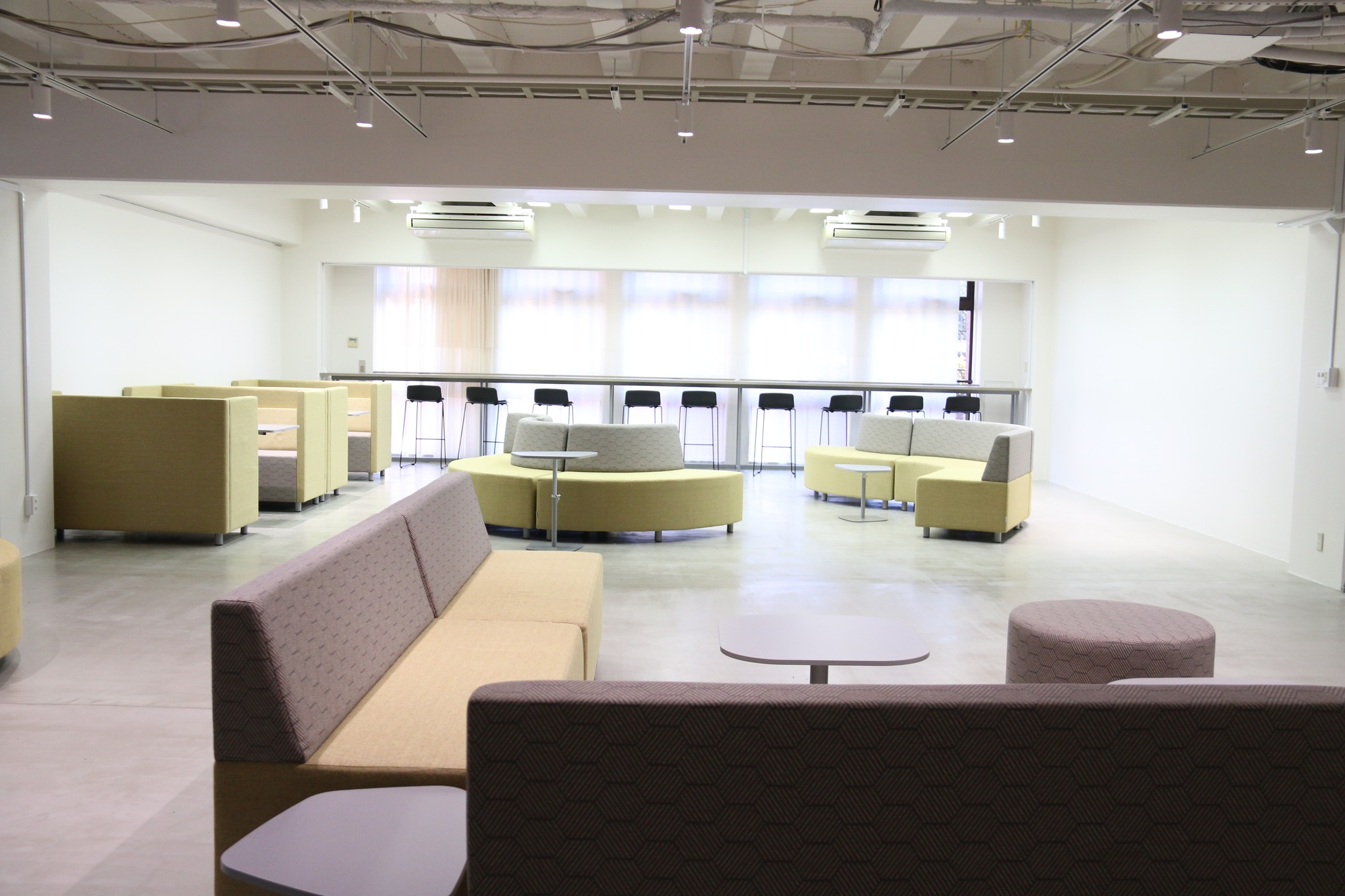
The campus is very functional and does not look like a normal school once you enter.
When we heard feedback from students, parents and teachers about the facilities, we realized how impressive the new campus is to them. In particular, teachers commented on how well the space is organized and how flexible it is.
We have a purpose built exhibition room that allows our students to display digital presentations. With nine connected digital monitors creating one large screen allows the students to create videos where images scan move from one end of the room to the other. In addition, this room allows for physical artifacts to be displayed.
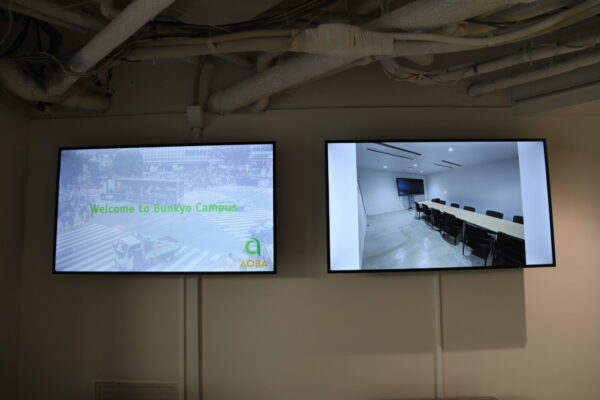
This new campus features a mix of open space and small working areas. New schools are being built in Tokyo, but we can proudly say that our Senior School’s unique design provides an environment more suited to what students will experience in the future.
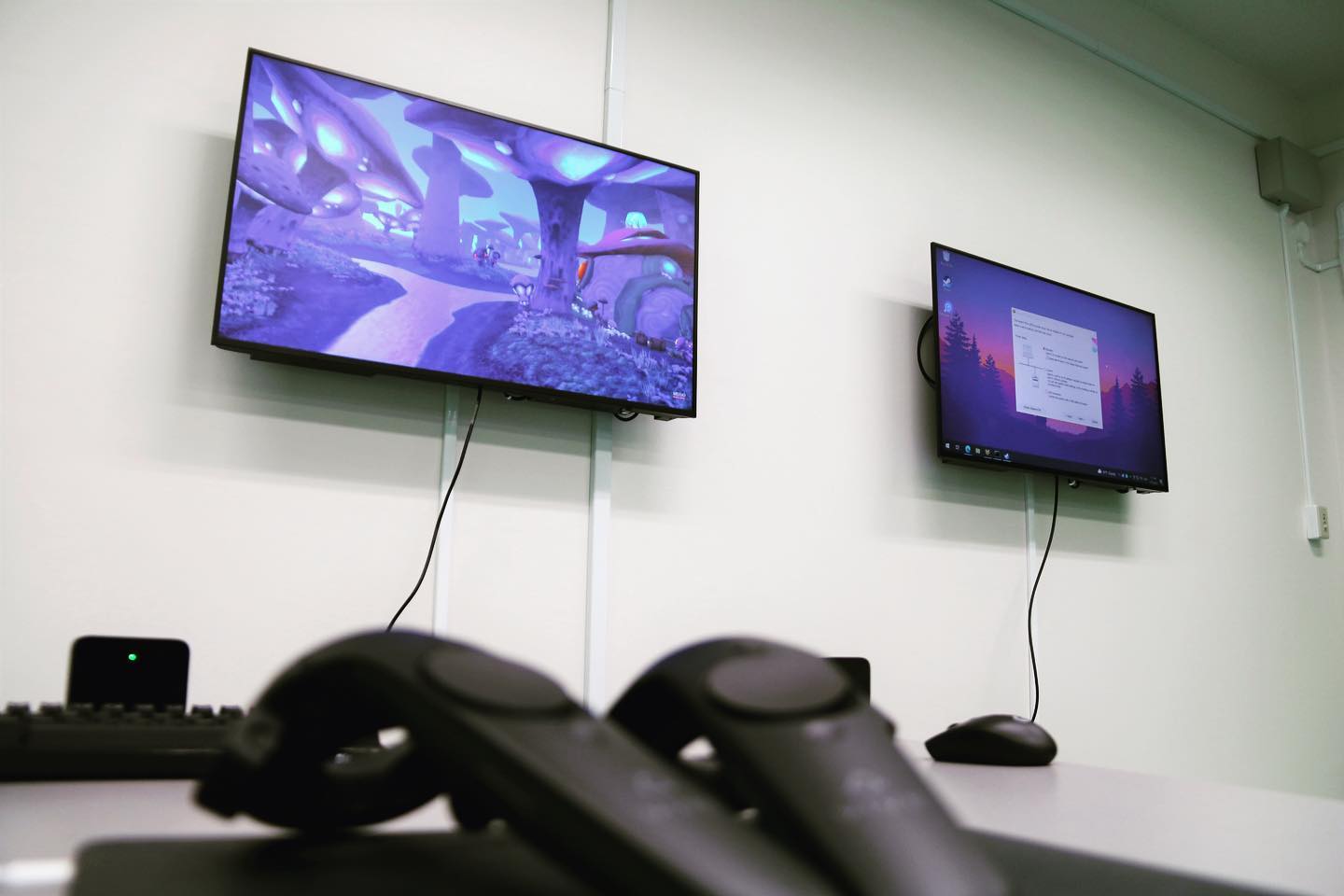
In addition, since many students at Aoba are interested in the performing arts, a special room was created in response to student requests. In this theater, a state-of-the-art sound system is wound around the ceiling, spreading sound and lighting the stage. About 50 students use this room to practice dances and performances.

Hybrid learning environment
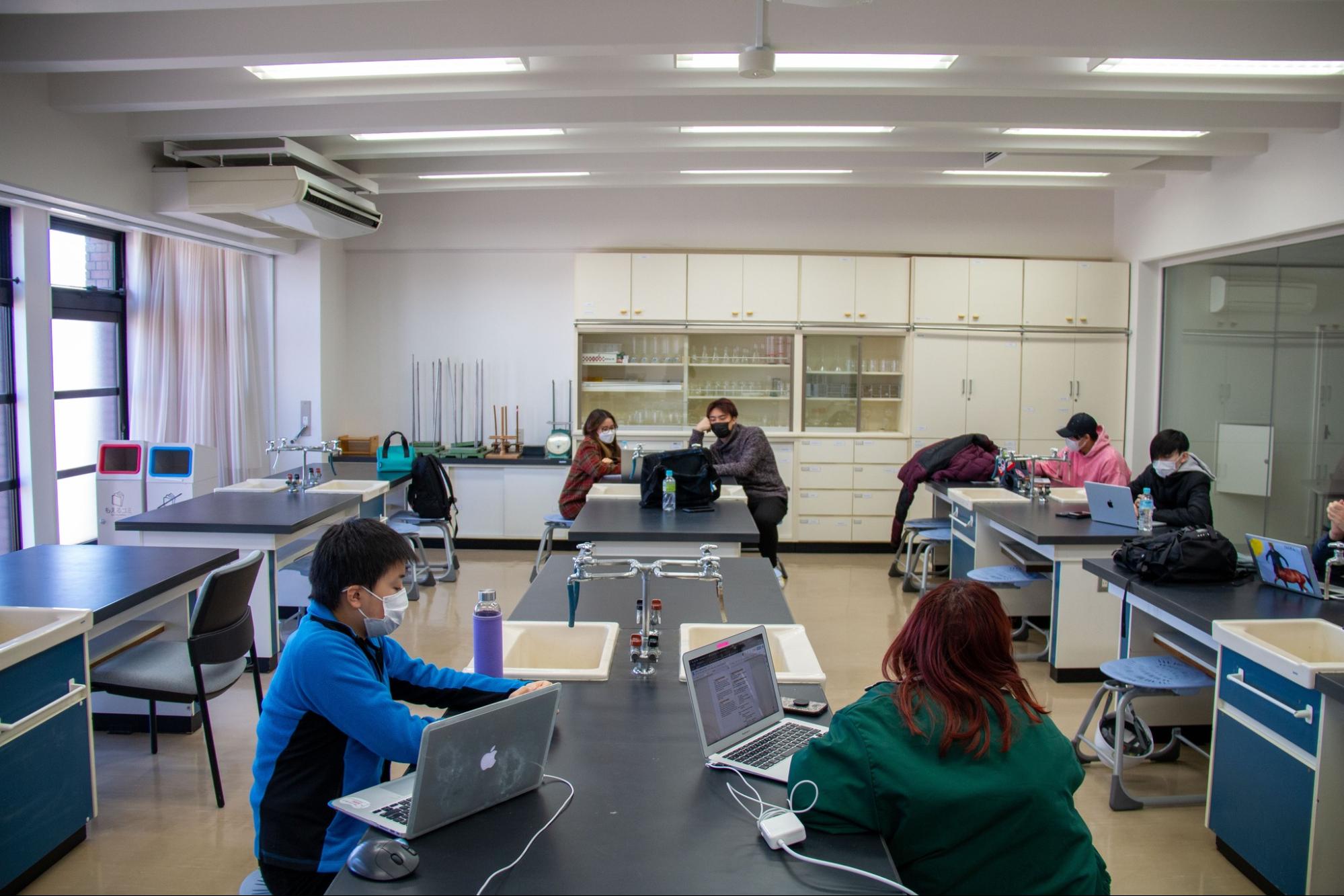
Our school is modern not only in its facilities but also in its teaching methods. Because we employ a hybrid blended learning approach. Teachers and students are trusted to work work and learn in school or at home. Even before COVID19, Aoba embarked on a Blended Learning project with the future in mind. The senior school exemplifies the Blended Learning approach to build the skills needed to be successful at a modern university or professional workplace.
For example, we have a teacher who is unable to work at the school. The teacher delivers online lessons remotely to students who are at school or at home. Our internal research shows that student achievement has not changed using this flexible approach to online or in-person learning,
Students may or may not come to school. This is because, as upper secondary students, we believe they are old enough to take control of their own lives. There are 20 students per class and face to face attendance is dependent on the type of learning activity. It is not unusual to see a teacher working with the whole class while some students learn with the class at home. There is the flexibility that allows freedom to extend the campus to students’ homes and working spaces. In a way, this is part of the future.
Secondary School Curriculum
The facilities and curriculum of the upper secondary school are closely related. We have designed our facilities and curriculum with three key elements in mind.
The first is performing arts, which requires creative thinking in the areas of visual art, music and performance. The second element is based on the principles of STEAM. This element focuses on applied science and engineering that includes high-level mathematics and computer science and technology. The third element is entrepreneurship and business. This element focuses on developing global leadership skills needed to make a positive change in the world once the student leaves Aoba.
These three elements were incorporated into the senior school’s facilities. Underneath this, our curriculum comes into play. There are three curricula we employ.
Our students enter the Senior School and complete the Grade 10 preparation program. This program, based on the St. Clare’s Oxford model, develops advanced research skills needed to prepare for the academic rigour of our Grade 11 and 12 Global Leadership Diploma or International Baccalaureate Diploma programmes. Both these diplomas have proven to get students into the world’s top universities and respected Japanese universities.
The Importance of Learning in Teams
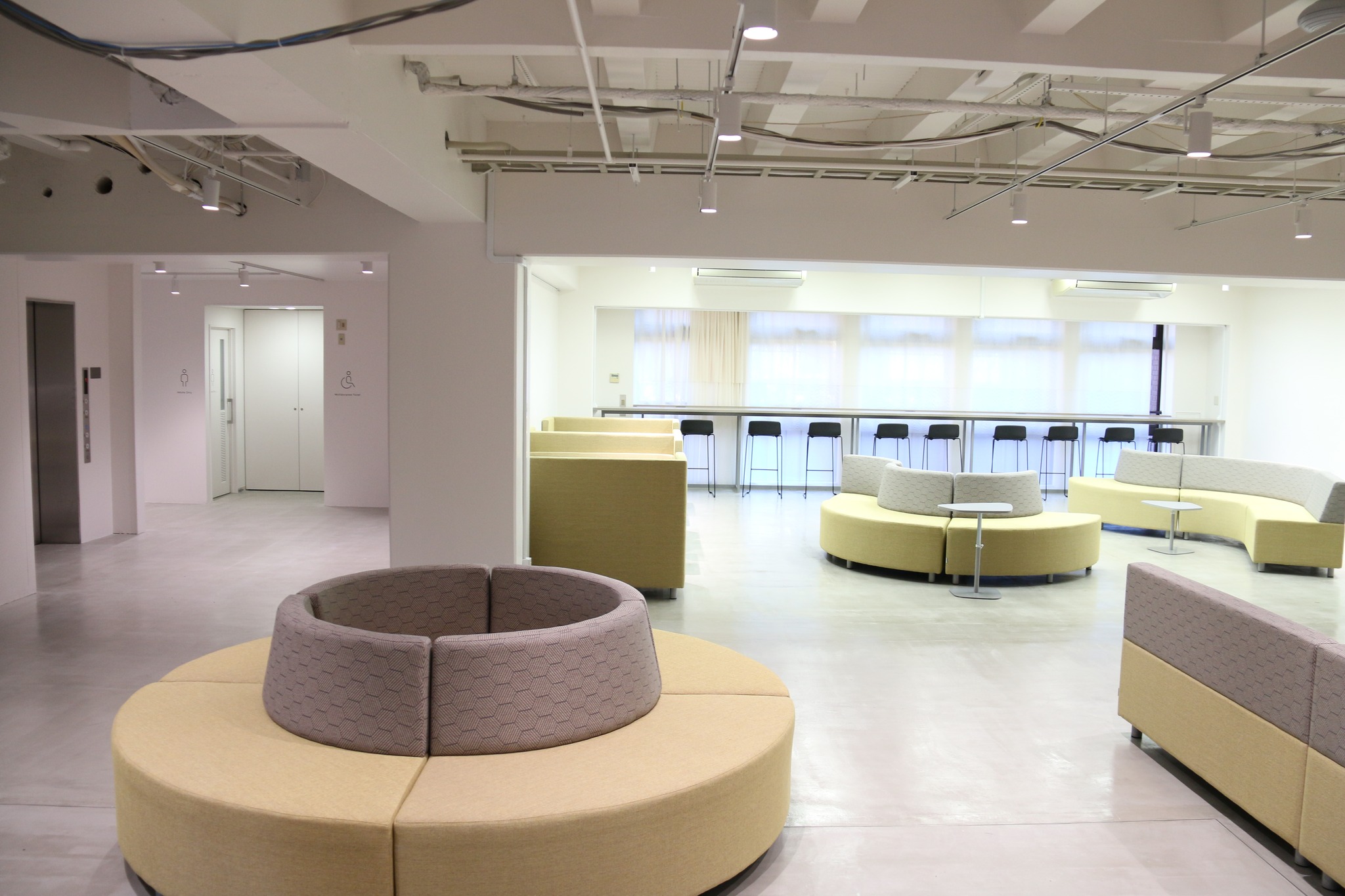
At Aoba, we place great importance on working in teams of three. Studies published by some of the best universities around the world have shown a positive impact on academic achievement and social skills can be achieved through structured team learning. In our digital world where content is readily accessible to students, modern institutions of higher education recognise the limitations of past practices. Preparing our students at Aoba keeps this in mind.
I am convinced that students who have an advanced understanding of the learning and problem solving process will be prepared for the new and different world to which they are heading. While memorisation remains important, it is no longer at the forefront of effective teaching and learning practices. More important questions such as “What problem do we need to solve and why? What do we need to know and do to solve the problem? “What have we learnt from this problem solving process that may be useful in the future?”
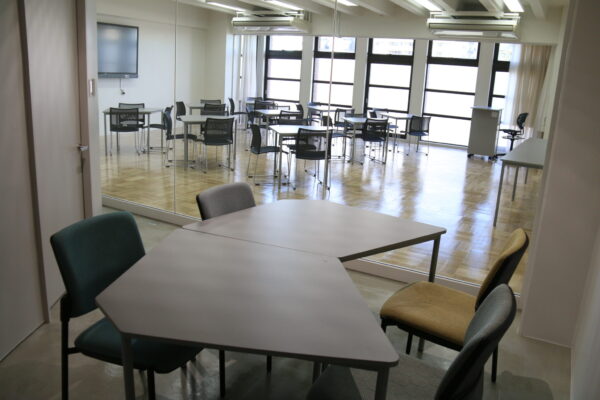
Aoba’s Significance as an International School
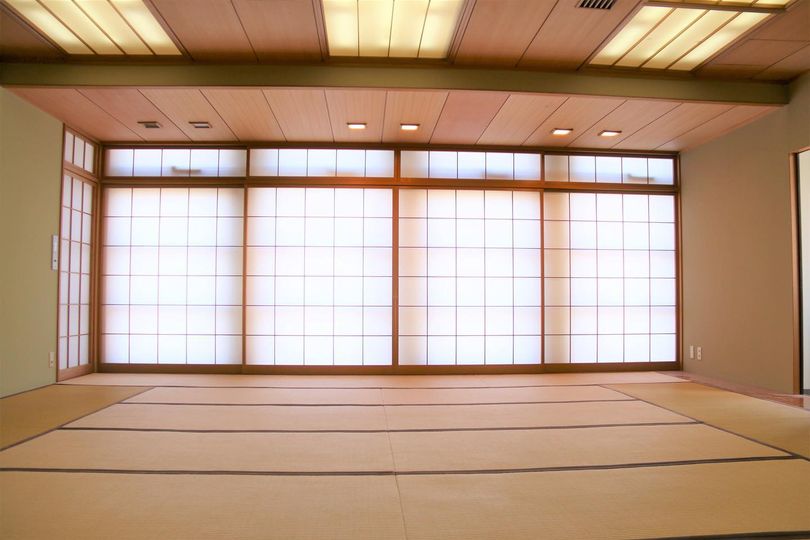
The company that operates Aoba (Aoba International Educational Systems, Inc.) is very forward-looking and modern. The staff working there are always thinking about how they can make a difference in the world.
About how to change not only Japan but also the world. Having such a parent company is a real strength for Aoba.
“What is our purpose?”
By rethinking what we do and the impact we can have on Japan as a whole, we make connections between our students’ learning and their future in a global context. Also, we are a true ‘international school’ for Japanese and international students. We do not believe that. At its core, international education aims to help us make the world a better place.
Internationally educated children are to be able to effectively solve problems by considering a variety of perspectives that exist within a diversity of cultures. They understand that there are many different ways to view the world. Once our students broaden their considerations to include multiple perspectives they increase their capacity to participate in making a positive difference.
Japan is one country and culture in this global society. Students must understand their culture. They need to think about what it means to them, what is good about Japanese culture, what needs to be improved, and what is holding them back.
I often tell teachers and staff that we need to educate our students so that when they leave school, they have the capacity to consider others when making decisions that will impact others.
Aoba is an institution where students learn to be leaders capable of leading positive change.
Reasons for choosing Bunkyo Gakuin campus
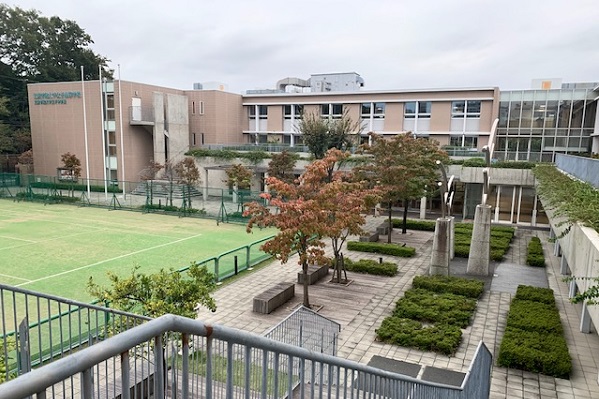
The practical reason is that Aoba has been increasing the number of students year after year and has run out of space at its Hikarigaoka campus. We searched for a new campus for about 5 years. Each time we realized that things were not going to work out.
We found that staff at Bunkyo Gakuin are open-minded, future-oriented and have a similar educational philosophy to us. These similarities were very important to us in deciding on a location.
As you can see, the facility was a traditional school, a square building, but it had ample potential. And the location, here in Bunkyo-Ku, is perfect. It is a place that values art, literature, academics, and the like. The University of Tokyo, which is one of the leading universities in Japan, is also located here, and I think it has a pretty strong relationship with the cultural aspect of Tokyo because it is an educational area. Right now the students from both campuses can collaborate in events such as dance and presentation. In future, we aim to build educational partnerships. Finally, the Senior School Campus is close to the Yamamoto Line providing easy accessibility for students living in Tokyo..
Editorial Summary
Aoba and Bunkyo Gakuin University Girls’ Junior & Senior High School are preparing for an educational collaboration that will benefit both schools. Since both schools share the same mission and purpose of nurturing global talent and international-minded individuals, we had a feeling that both schools’ school education would be enriched by this collaboration.
And I felt that Aoba’s Komagome campus is an institution of higher education that is more advanced than any other, not only in terms of its advanced facilities, but also in terms of its educational policies and curriculum, with an emphasis on developing global leadership skills, entrepreneurial spirit, and innovative mindset.
We are very excited to see how Aoba will collaborate with Bunkyo Gakuin in the future to provide students with an unparalleled education. The editorial team will continue to keep a close eye on the School’s developments.
Access & Directions
Bunkyo Campus
6-18-23 Honkomagome Bunkyo-ku Tokyo 113-0021
Phone:03-4520-2313
Contact:https://www.japaninternationalschool.com/contact/
Facebook:https://www.facebook.com/aobajapan/?ref=aobajapan
Instagram:https://www.instagram.com/aobajapan/
Twitter:https://twitter.com/aobajapan?lang=en
Youtube:https://www.youtube.com/channel/UCsAg9Hn_RGZKtMK25B8_65w
Linkedin:https://www.linkedin.com/company/aoba-japan-international-school/
Hikarigaoka Campus
7-5-1 Hikarigaoka, Nerima-ku, Tokyo 179-0072
Phone: 03-4578-8832
Meguro Campus
2-11-5 Aobadai, Meguro-ku, Tokyo 153-0042
Phone: 03-4520-2313
Writer: Kaori Takahashi (eduJUMP! Editorial team)



